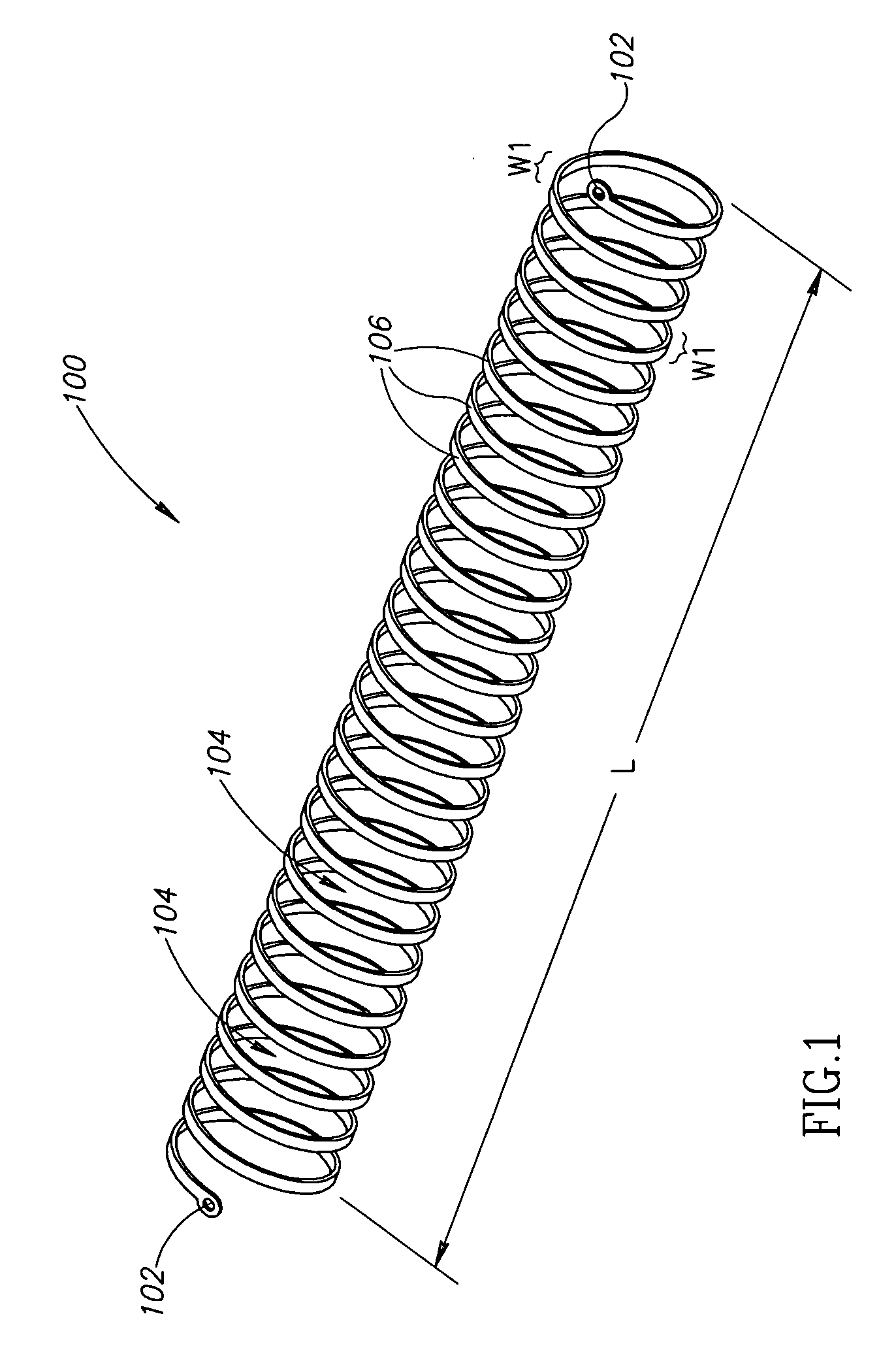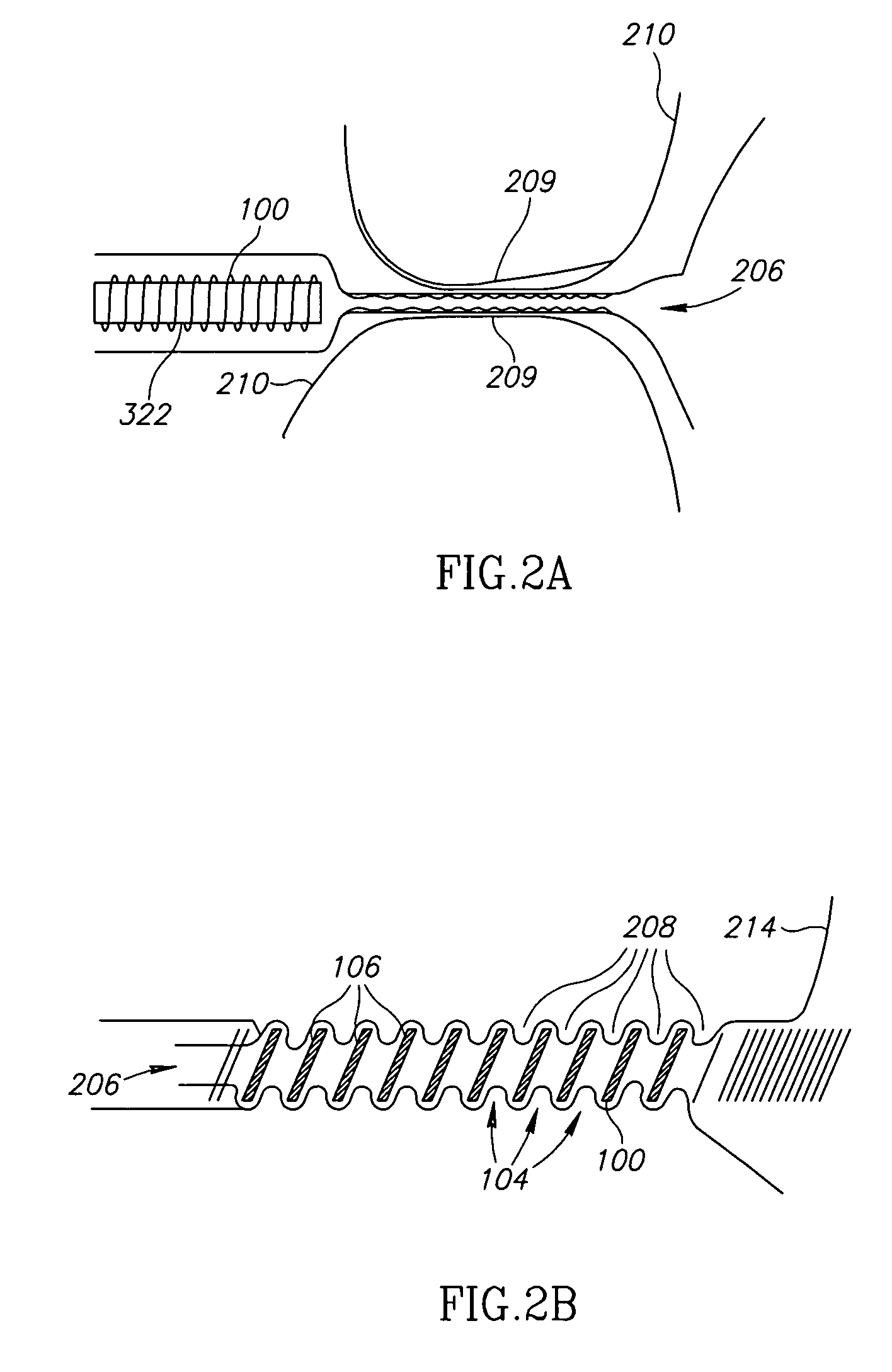Prostate treatment stent
a stent and prostate technology, applied in the field of prostate treatment, can solve the problems of applicating force and expected to starve or otherwise kill the cells of the tissue trapped by the device, and achieve the effect of widening the urethra and avoiding traumatic effects on the tissu
- Summary
- Abstract
- Description
- Claims
- Application Information
AI Technical Summary
Benefits of technology
Problems solved by technology
Method used
Image
Examples
Embodiment Construction
[0071]FIG. 1 is a schematic illustration of an elastic prostate implant 100, in accordance with an exemplary embodiment of the invention. Implant 100 includes an axially compressing device, such as a coil-shaped wire including a plurality of turns 106. Implant 100 has an elastic structure which axially compresses absent an external force. In FIG. 1, implant 100 is stretched such that gaps 104 are formed between turns 106. As described below, gaps 104 receive urethra-obstructing tissue which is to be removed and slowly press on the obstructing tissue until it is cut away and / or falls off due to tissue necrosis. In some embodiments of the invention, implant 100 includes anchoring structures, such as holes 102, at both ends, for use in stretching implant 100 to the state shown in FIG. 1. Holes 102 are optionally used during insertion of implant 100 to the urethra and / or for removal of the implant from the urethra.
[0072] Optionally, implant 100 is radially durable such that implant 100...
PUM
 Login to View More
Login to View More Abstract
Description
Claims
Application Information
 Login to View More
Login to View More - R&D
- Intellectual Property
- Life Sciences
- Materials
- Tech Scout
- Unparalleled Data Quality
- Higher Quality Content
- 60% Fewer Hallucinations
Browse by: Latest US Patents, China's latest patents, Technical Efficacy Thesaurus, Application Domain, Technology Topic, Popular Technical Reports.
© 2025 PatSnap. All rights reserved.Legal|Privacy policy|Modern Slavery Act Transparency Statement|Sitemap|About US| Contact US: help@patsnap.com



